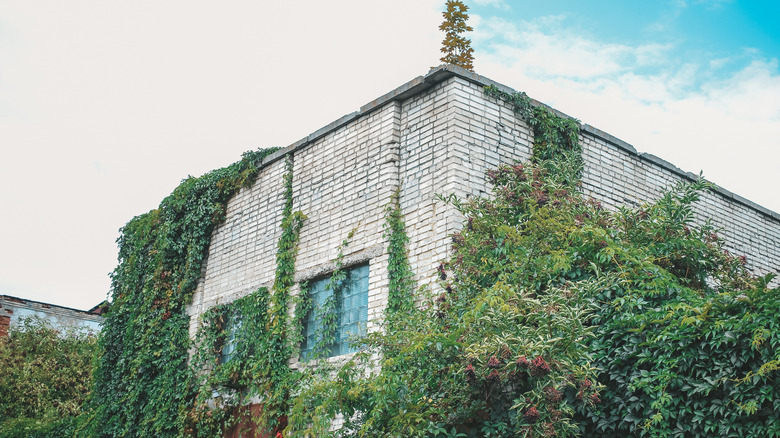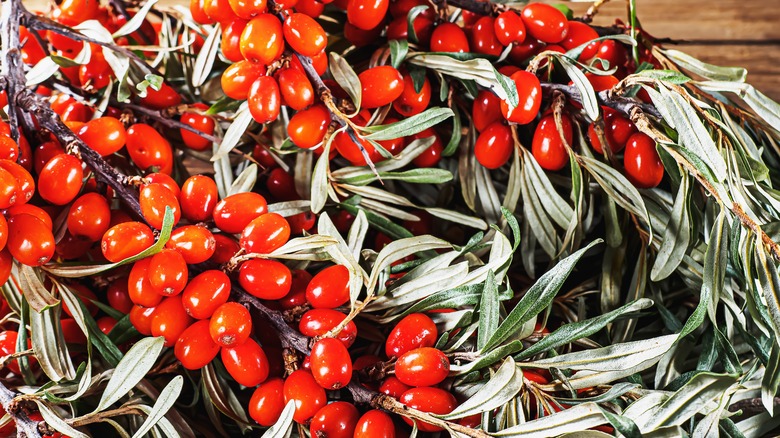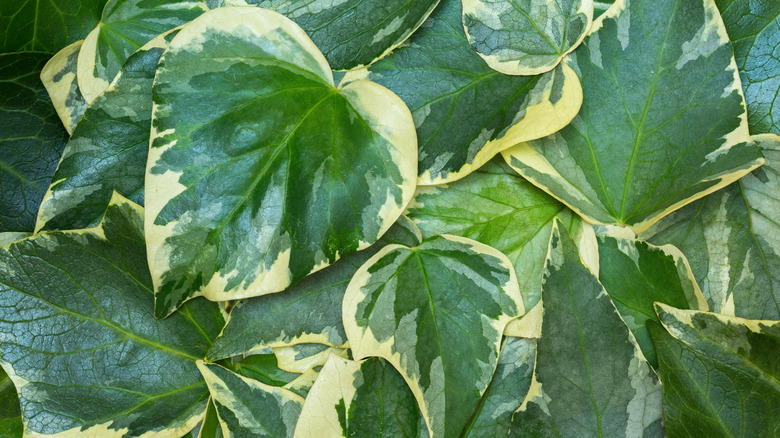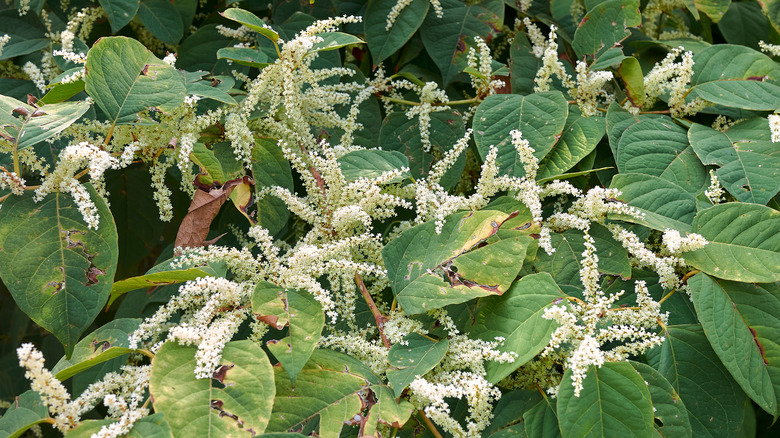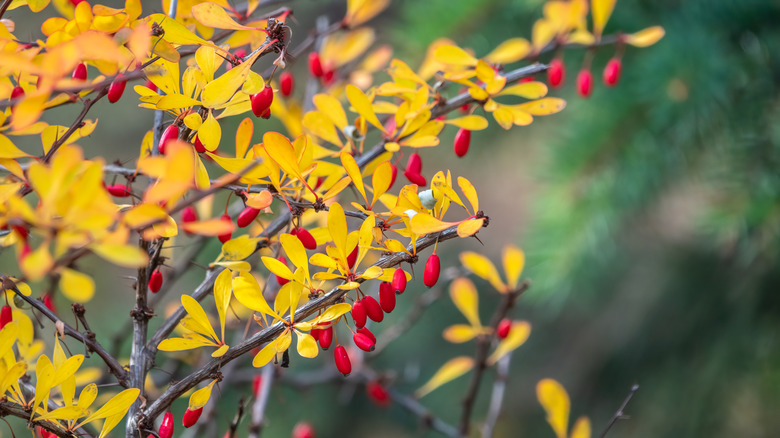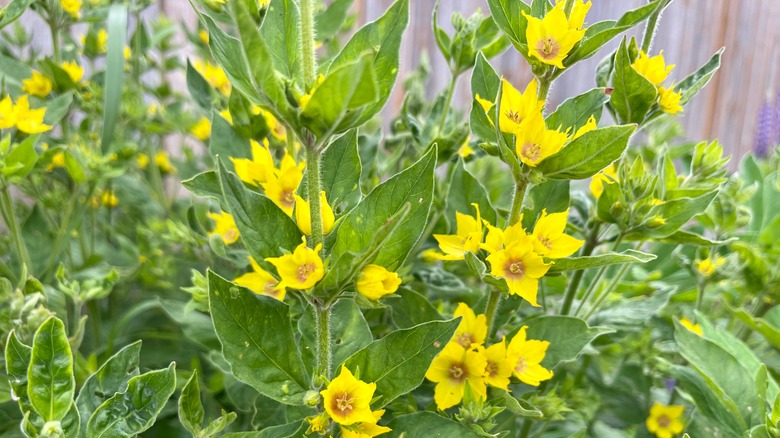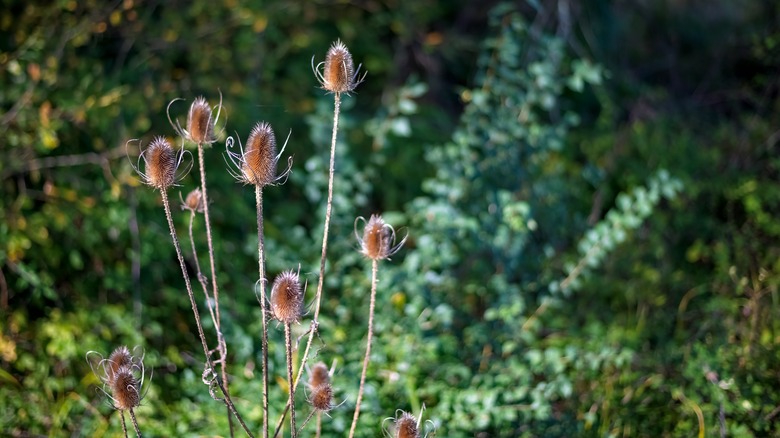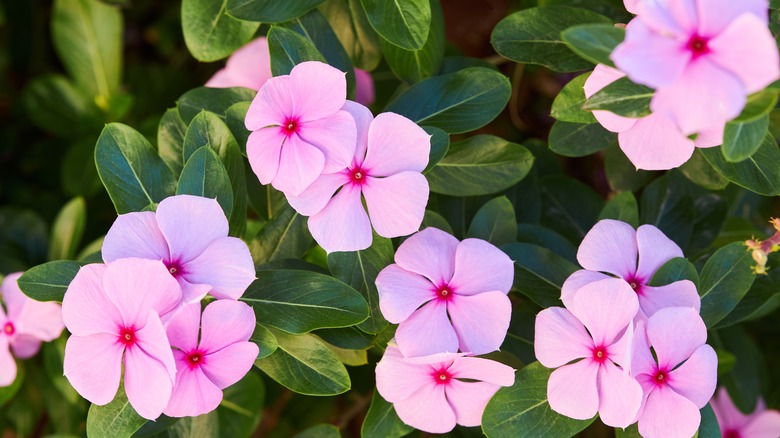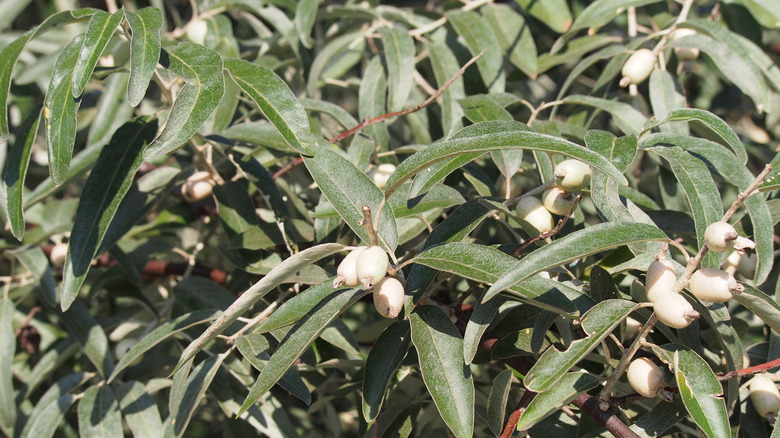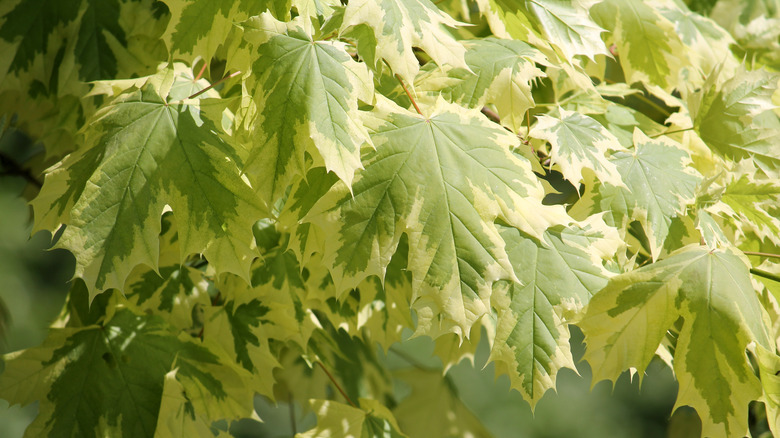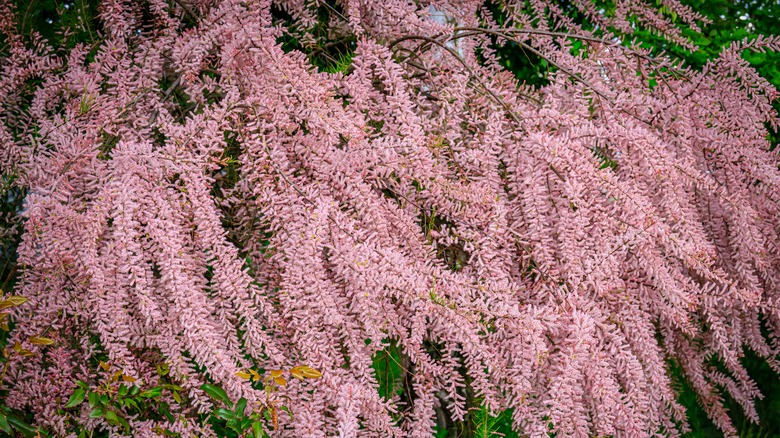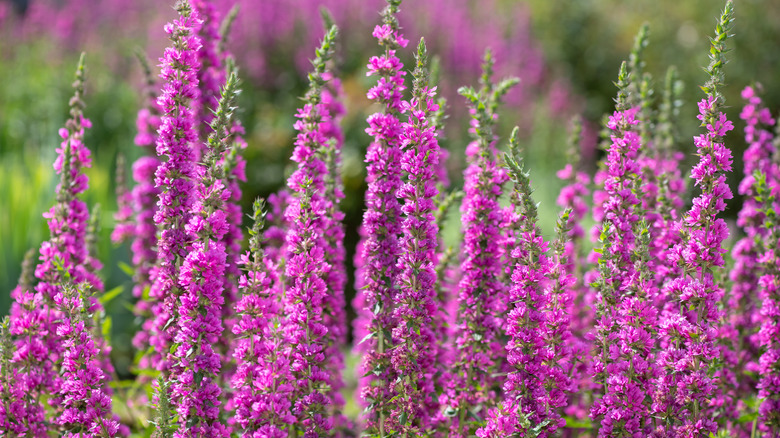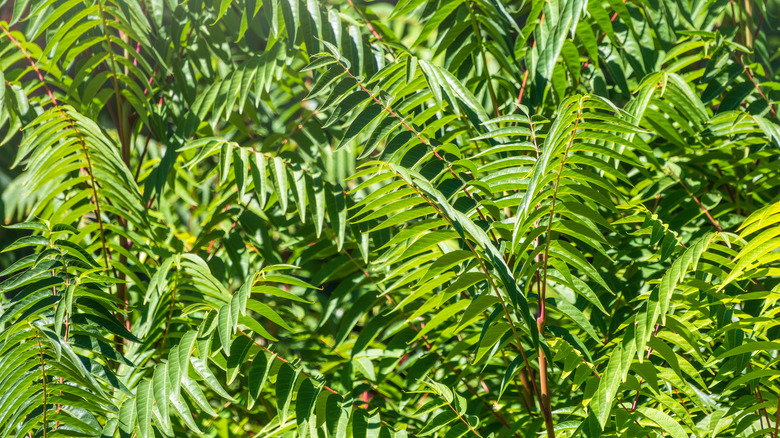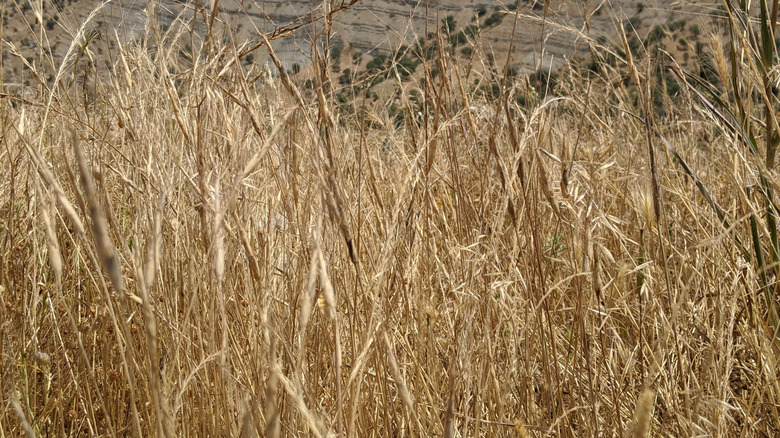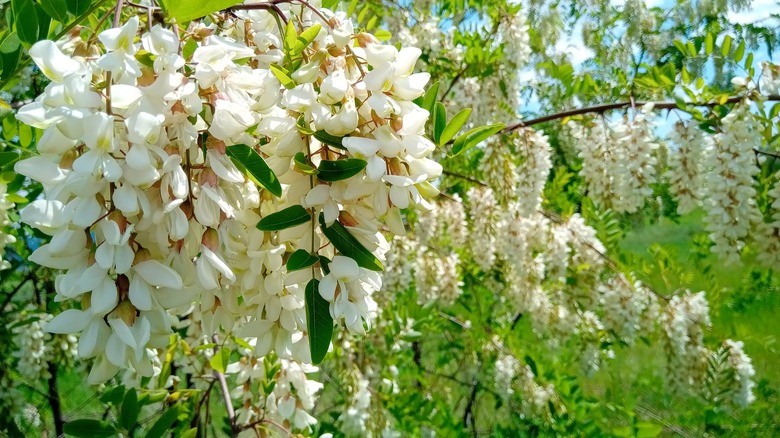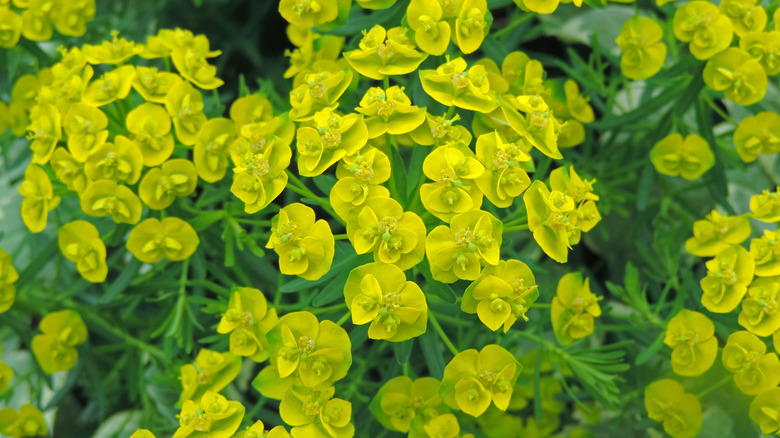15 Invasive Plants You Should Never Grow
"Going green" is currently one of the fastest-rising trends and a healthy one at that. For some of us, going green means picking low-light indoor plants for our tiny urban apartments. Meanwhile, for homeowners with enough room for a complete backyard garden, it's about sprucing their landscapes to life with a combo of garden flowers and evergreen trees.
But there are awkward moments along the journey. Imagine waking up to one of your outdoor plants sneaking into your room through a crack in the foundation of the house –– because it's cold outside. Or, even worse, picture unintended Japanese knotweed jumping off your fence to surprise the neighbor in the next house with "presents." Not so cute anymore, right?
So, if you'd rather not get yelled at by your neighbor for an encroaching plant or a trespassing tree, unlike this guy, you should check out this list of 15 invasive plants you should never grow, be it indoor or outdoor.
1. Buckthorn
Buckthorn (Rhamnus cathartica L.) is a tall deciduous shrub or a small tree with small-sized, berry-like drupes and glossy green leaves with deep and prominent veins, per National Park Service. Buckthorn is not only invasive but also toxic. The last thing you want to witness is your dog whimpering in distress after taking a few bites from the overhanging cramps-causing drupes of this plant.
Bloom Season: late spring to early summer
USDA Growing Zone: 2 to 8
Growing Conditions: full exposure to the sun
Soil Type: all types
Size: 10 feet to 25 feet tall, 10 inches wide
2. Algerian ivy
Another plant you should never grow in a small space or an environment of pets and kids is Algerian ivy (Hedera canariensis). It is an evergreen that spreads like wildfire, stubbornly spreading its fleshy, shiny, deep green, lobed leaves, which are as toxic as the berry-like drupes produced by the plant, per DIYs.com.
Bloom Season: spring
USDA Growing Zone: 7 to 11
Growing Conditions: partial shade and partial sun
Soil Type: slightly acidic, well-draining soil
Size: 20 feet to 30 feet tall, 3 feet wide
3. Japanese knotweed
Here comes the Japanese knotweed (Reynoutria japonica) that may soon drive you and the neighbors nuts. According to Japanese Knotweed Specialists, this perennial weed from the streets of Asia has built a reputation for knocking walls down and causing other types of structural damage immediately after finding its way to this part of the world without a passport.
Bloom Season: late summer to early autumn
USDA Growing Zone: 4 to 10
Growing Conditions: semi-shade to full sunlight
Soil Type: sandy, loamy, and silt
Size: 7 feet to 11 feet tall (limitless width)
4. Barberry
Barberry (Berberis vulgaris), a native of Europe and all-time exotic invasive deciduous shrub, has been spotted spreading its territory across the north-eastern USA, as claimed by Invasive.org. But don't be bamboozled by its inviting elongated oval-shaped red fruits, this evergreen shrub causes some of the most severe pains to whoever touches its thorny stems.
Bloom Season: late April to early May
USDA Growing Zone: 4 to 7
Growing Conditions: full sun or partial shade
Soil Type: well-draining soil
Size: 3 feet to 6 feet tall, 4 feet to 7 feet wide
5. Moneywort
Meet moneywort (Lysimachia nummularia), a prominent member of the primrose family: a family of flowering plants loved for their beauty but hated for their uncontrollable growth. This guy is called "creeping jenny" for a reason, according to Invasive.org, as it takes over your landscape by spreading its long creeping stems wherever it wants and becoming difficult to get rid of.
Bloom Season: summer
USDA Growing Zone: 4 to 9
Growing Conditions: high lighting
Soil Type: moist, well-drained soil rich in organic matter
Size: 3 inches to 6 inches tall, 2 feet (or more) wide
6. Teasel
Teasel (Dipsacus) of the honeysuckle family is a plant you've been paying little to no attention to, most likely, every time you pass by waste areas or grasslands. According to the Wildlife Trusts, the teasel is an embodiment of prickly thorns that may leave a horrible and lasting first impression on a curious pet that dares to pluck its spiky flowers.
Bloom Season: late summer
USDA Growing Zone: 3 to 9
Growing Conditions: full sunlight
Soil Type: moist soil
Size: 7 feet to 10 feet tall, 3.5 feet (or more) wide
7. Multiflora rose
Multiflora rose (Rosa multiflora) or call it baby rose because it crawls, or call it Japanese rose when it flies over barriers like a ninja, or call it seven-sisters rose when it's cloaked in white garment-like flowers like a group of seven nuns. This garrulous and patriarchal rambling shrub likes to prove dominance over other plants by invading and crowding them out.
Bloom Season: late May to early June
USDA Growing Zone: 3 to 8
Growing Conditions: full sunlight
Soil Type: humus-rich, well-drained soil
Size: 10 feet to 15 feet tall, 9 feet to 13 feet wide
8. Russian olive
Texas Invasive Species Institute calls the Russian olive (Elaeagnus angustifolia) an aggressively invasive woody shrub or tree that's out to out-compete the beneficial plants in your garden. That means that it wants to take over the garden for itself and doesn't like to play with others.
Bloom Season: May to June
USDA Growing Zone: 2 to 7
Growing Conditions: full sun
Soil Type: well-drained sandy or loamy soil
Size: 10 feet to 45 feet tall, 10 feet to 20 feet wide
9. Norway maple
Native to Russia, Spain, Europe, and Western Asia, the Norway maple (Acer platanoides) is a deciduous tree with wide-spreading leaves and fine ridged gray bark. It has been convicted by Tree Canada for killing native tree seedlings and oppressing the beloved red oak.
Bloom Season: late April to early June
USDA Growing Zone: 4 to 9
Growing Conditions: full sun
Soil Type: all types of well-drained soil
Size: 40 feet to 60 feet tall, 50 feet wide
10. Tamarisk
Take a ride around the broad highways and freeways of west America, and you'll stumble upon Tamarisk (Tamarix ramosissima) in its domain. In an article from Smithsonian Magazine titled "How we created a monster in the American southwest," the salt cedar (as tamarisk is often called) is considered an unkillable invader that grows right back when burned and overcomes the power of every herbicide.
Bloom Season: late summer to fall
USDA Growing Zone: 2 to 8
Growing Conditions: full sun
Soil Type: moist, well-drained soil
Size: 10 feet to 15 feet tall, 8 feet to 13 feet wide
11. Purple loosestrife
According to Invading Species, a plant of purple loosestrife (Lythrum salicaria) can produce up to 30 flowering stems, which in turn can churn out 2.7 million seeds annually. Mind you, we are talking about a plant that is a threat to the habitat of native birds, irrigations, and native plants. Maybe planting this guy is not a really good idea for "going green" after all.
Bloom Season: early July to September
USDA Growing Zone: 3 to 10
Growing Conditions: full sun or partial shade
Soil Type: moist or dry soil
Size: 3 feet to 10 feet tall, 5 feet wide
12. Tree of heaven
Tree of heaven (Ailantus altissima) sounds cute but may actually bring hell to your property if care is not taken. FYI, this fast-growing deciduous tree allegedly traveled all the way from China to the United States. We could do without its strong, offensive stink that The Nature Conservancy points out is one of its traits.
Bloom Season: late spring
USDA Growing Zone: 4 to 8
Growing Conditions: full sun
Soil Type: all
Size: 60 feet to 70 feet tall, 80 feet wide
13. Cheatgrass
Cheatgrass (Bromus Tectorum) is truly an unapologetic cheat that evades native plants and denies them access to the soil water that's rightfully theirs. NPR says that this grass can not only start a wildfire but can turn an ongoing fire outbreak into an inferno. This is definitely one grass you don't want during drought season.
Bloom Season: early spring
USDA Growing Zone: 7 to 10
Growing Conditions: partial shade
Soil Type: all
Size: 2 feet tall, (width undetermined)
14. Black locust
Meet the most problematic invasive tree in Europe, the black locust (Robinia pseudoacacia), per Science Direct. This is definitely not the type of tree you want in your backyard. According to Michigan.gov, this thorny tree grows by rapidly spreading its root everywhere, regenerating from its stump after you decide to chop it down, and forming colonies.
Bloom Season: April to early June
USDA Growing Zone: 4 to 8
Growing Conditions: light shade or full sun
Soil Type: all
Size: 30 feet to 80 feet tall, 20 feet to 35 feet wide
15. Leafy spurge
Leafy spurge (Euphorbia esulia) looks like a beautiful flowering plant, but if you're ever going to be planting this yellow eye-catcher, you better be ready to employ a watch guard that will stand by it day and night, making sure it doesn't grow out of proportion. Otherwise, steer clear.
Bloom Season: early summer
USDA Growing Zone: 4
Growing Conditions: sunny to shade
Soil Type: dry to moist soil
Size: 1 foot to 2 feet tall (width undetermined).
